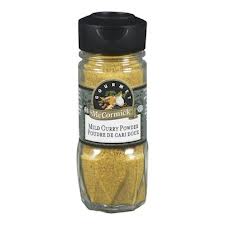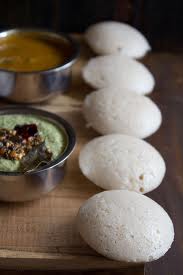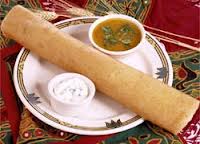Food: Fabulous and Fattening
Food is a weighty topic, and one I am rather passionate about. Perhaps that is why it took me five months to get around to it.
Most people in Canada have some idea of Indian food, particularly in the bigger cities; and if you find yourself in say Brampton or parts of Mississauga you can get the real deal. Yet all too often North American understanding of “curry” is limited to a bottle of mixed yellow spices. Available in mild or medium.
(Note: curry just means a combination of spices, which means every household and road-side lunch spot has its own combination and unique flavour.) The complexity and immense regional variety of Indian food is often lost in Indian restaurants in Canada.
So how to describe foods whose names I can’t even remember? All I can say is that the variety of dishes is innumerable, and only on rare occasions have dishes been too spicy for my liking (most often from the small place near my office where I get my lunch every day, and where health standards are questionable but I am yet to get sick, and you get what feels like a kilogram of delicious food (which includes two chapattis, white rice, dahl, two vegetable curry dishes, rasam soup, curd, and crispy sweets) for $0.67. On the note of quantity, I have slowly worked over language barriers to ‘train’ them to give me less rice and skip the rasam, even as they look at me somewhat dumbfounded that I am unable to finish the standard mound of rice).
Hyderabad is particularly well known for two specialties – biryani and haleem during the Islamic month of Ramadan. The biryani is made with basmati rice and normally mutton. Haleem is a stew composed of meat, lentils and pounded wheat made into a thick and gooey kind of paste. It is high in calories, and thus a great meal to break the day-long fast. (But perhaps not such a great idea to indulge in too often if you are just a tourist eating the haleem as a snack or as one of your regular meals without the fasting.)
Living with an Indian family for some months, I was fortunate enough to enjoy many South Indian breakfasts. Breakfast was rarely sweet (unlike sugar-loaded cereals, jams, muffins, and the like of North American breakfasts) – but rather quite salty and occasionally spicy. It rotated through dosas with chutney, idly with powder spices or chutney, lemon rice, roti, and many more dishes I cannot recall the names of (and made with unfamiliar ingredients, thus I don’t even know how to describe them). Some mornings the housewife would ask me to taste the breakfast meal to check the level of salt – as she had not yet performed her morning puja (a type of praying) so could not try it herself. I was perhaps the least qualified person to ask, as for me the salt level always seems too high in Indian cooking, and I have no sense of what the dish would ‘normally’ taste like. But I was the most convenient person to ask, and thus obliged and always said it was good.
As much as I enjoy the flavours of Indian cuisine, my general observation of modern urban South Indian food is that it is not very healthy. While partly this is my opinion, based on measures of health which I have been raised with, chatting with a doctor and diabetes specialist – over a glass of beer – here in Hyderabad he had a similar sentiment. The main reasons are:
– Mounds of rice – breakfast, lunch, and dinner, it is all about white rice. And lots of it. In North America, we consider these ‘empty carbs’: short-term fill, but lack of fibre or protein. (In north India, roti replaces rice.) (The same doctor invited me over for dinner, and explained how they now only eat brown rice – which no doubt is rather controversial.)
– Lots of oil – whether used in a wide variety of deep-fried snacks and foods, or in preparing curries and pickles (note: pickles has nothing to do with cucumbers; rather is a strongly-flavoured condiment based on tomato, mango, lemon, etc.)
–Very high levels of salt – which, apparently, helps with the spiciness.
– Milk: standard is 3% fat. Slim (skim) milk is available, but only in pricier long-life cartons and I suspect most popular among foreigners.
– Levels of sugar that go into chai (spiced tea always served with milk and sugar). Must be what makes it taste so good, given I never put sugar in my coffee back home. As long as I don’t see how much sugar goes in, I am happy to keep drinking it. (To be noted, chai is consumed in small cup and therefore significantly smaller portions than the giant mugs and half-litre thermoses of coffee in North America. Also, chai is never taken on the go, but quickly sipped while standing or sitting before moving on with the day.)
– Not a lot of vegetables; they make an appearance in a wide number of curry dishes – but never in the quantities I wish. Further, the vegetables are always cooked and only onions are served raw with lemons as a side ‘salad’.
– Insufficient protein. Some dishes have channa (chickpeas) or dal (lentils), and curd (yogurt) is normally eaten at the end of every south Indian meal (with rice and salt, as the final step). Some chutneys are made of groundnut and a few pieces of peanuts are found in lemon rice. Idly has some lentils ground into it. But overall, meals can pass without a single source of protein in sight. I am convinced this somehow plays a role in why Indians – and south Indians in particular – are relatively short.
At the same time, I am also against the extreme consumption of animal protein seen in many North American diets – where meat is consumed at numerous meals in the day. This is not only bad for the environment (see for example Goffman’s article on The Environmental Impact of Meat), but also packs in too many calories, and in part contributes to the obesity crisis not just in North America but also in emerging economies such as China (on account of more wealth among the growing middle class – see this article; and is resulting in the ‘double burden’ of fighting obesity and hunger simultaneously – see this article). India, too, has its share of obese individuals; in fact I have rarely seen a middle- or upper-class adult who does not have a rounded mid-waist. In horrifying article titles, there are even claims that ‘Indians are getting as fat as Americans’ – blaming the Western food invasion. One (slightly questionable) study claims half of all urban Indians are obese.
The Green Revolution of the 1970s has also had its impact on Indian diets. Certainly, this has boosted food production in the country, but it also emphasised certain grains – namely rice and wheat, over traditional protein-rich grains such as millet. The irony is that in North American supermarkets individuals are spending big bucks to buy these healthy ‘ancient’ grains; while in India the same goes for an obscenely low price and is largely ignored for its real value (nutritional and export).
While Indian foods may seem unhealthy to me, so do many North American foods – particularly the sugar, salt, corn-derived ingredients (check out this list), artificial flavours and colours, and other ingredients I cannot even pronounce (thus I am sure are unnatural) found all too often in packaged foods. This doesn’t even get into the use of pesticides – in India and Canada. But one difference is that in India the food is much fresher in that bananas or tomatoes probably ripened on the tree / vine before being picked and brought to market; so the flavours are richer.
The challenge about Indian cooking is that it is very time-consuming (every housewife is sure to spend a few hours per day in the kitchen), as each meal calls for a number of dishes, fine chopping, long periods of stewing, etc. Therefore, sadly, I cannot say that I have learned how to cook Indian food – just how to enjoy it.







Pingback: Thank You For the Snacks | buchan abroad